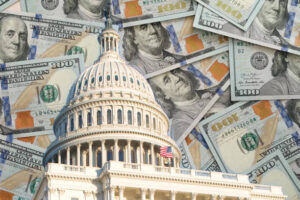U.S. Credit Card Debt Hits $1.21 Trillion in 2025: Navigating Consumer Spending Trends and Credit Card Economics

Background of U.S. Credit Card Debt
It is estimated based on available statistics that the US credit card debt is growing at an annual rate of up to $12 million compared to the 9.7% credit card revolving growth rate in July 2025.
This is attributed to increasing consumer expenditures, increase in interest rates and inflationary pressures. It should be noted that average credit card balance per borrower has also risen to an average of 6,580.

The Surge: U.S. credit card debt
The latest figures, however, reveal that the U.S. credit card debt has already swelled to an equivalent of 1.21 trillion, an indicator that shows the 9.7 per cent annual rate of increase in the credit card debt to reach a level by July 2025.
High consumer spending, interest rates, and inflation necessities have contributed to this soar. It is highly conspicuous that the average credit card balance on a per-borrower ratio has swollen to approximately 6580 dollars.
The increase in credit card debt is also resulting from seasonality. As an illustration, as fall begins, the consumer will desire to sample the new emotional comforts of the season, which could be the pumpkin spice lattes, individual fashion acquisitions, or the stylish adornments, the additional heating of their home and the new subscriptions. The outlays, despite their innocence, might, however, work wonders in their magnitude to run the consumers into debt.

Consumer Spending Trends in 2025
Consumer spending has neutralised the rise in the debt levels. In August 2025, U.S. retail sales increased by 0.6%; this is even larger than expected. Still, its expansion is slowing down, with a forecast that reflects consumer expenditure outcomes being 2.3 per cent in 2025 (compared to 5.7 per cent in 2024).
The Dynamics of Credit Card Economics
The credit card market is facing massive economic transformations. The Federal Reserve information is that the revolving credit data and has recorded an annual growth of 9.7 percent as the delinquency data has recorded a positive sign and all the delinquent measures are continually declining each year at first quarter 2025.
These trends suggest that consumer borrowing is complexly connected with each other coupled with economic conditions.

Final Verdict
The existing situation of U.S. credit card debts accentuates the complexity of the connection between celebrity purchase patterns and credit card economics. Debt distribution is getting more relevant and significant to study its dynamics as the level of debt keeps on growing, making it more important to navigate the changing financial environment.







2 thoughts on “U.S. Credit Card Debt Hits $1.21 Trillion in 2025: Navigating Consumer Spending Trends and Credit Card Economics”